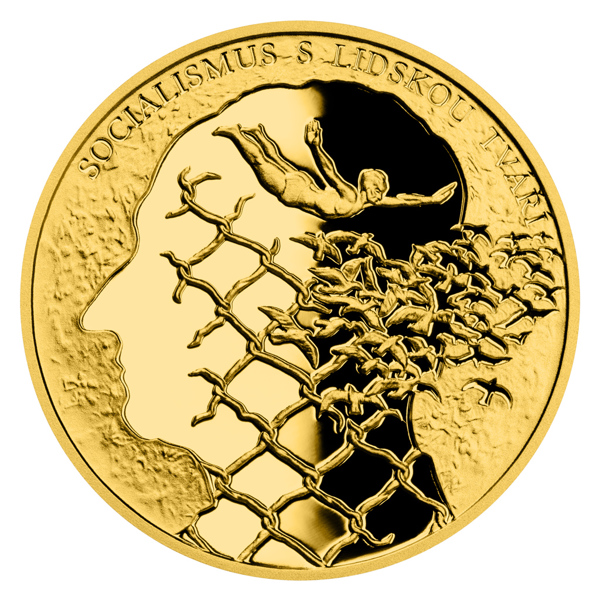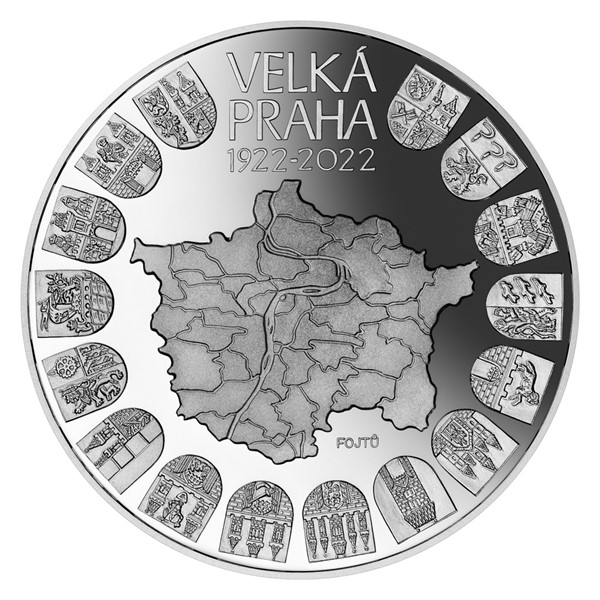New Facts To Janvier Processing Czechoslovakia Medals
New Facts To Janvier Processing Czechoslovakia Medals
Blog Article
What Is The Process To Take A Plaster Model And Scan It To Create A 3d Digital Model Of Gold Coins Or Medals?
Scanning a maquette for gold coins and medals needs specialized equipment. It records all dimensions, details, and physical aspects of the model. The digital replica can be used in a variety of ways throughout the production.
3D Scanning- High-resolution, 3D scanners are used to capture the dimensions and the details of a plaster model. These scanners employ various methods to take exact measurements.
Surface Information Capture - The scanner emits laser or light beams on the model's surface. The scanner captures any reflections or distortions created by laser beams and thus can record the surface details of the plaster model.
Data Collection - As it travels across the plaster models the scanner collects many information points. These data points are then utilized to create an electronic model of the model that includes its geometry, contours, details, etc.
Conversion to 3D Model- The collected data points are processed by specialized software, which reconstructs the data into a 3D digital model. This model is a replica of the physical dimensions and features of the plaster maquette.
There are many reasons to create 3D digital models
Precision and Replication Digital 3D models allow for precise replication of the model's features and dimensions. It is essential to maintain this precision to ensure that the design and style of the gold medal or coin corresponds to the original.
Digital models can be easily modified or upgraded. Designers can alter the 3D model, without changing the plaster model in its original form. This permits iterative adjustments or enhancements.
Compatible with manufacturing processes Digital 3D designs are compatible with various manufacturing techniques like 3D printing or CNC machining, making it easier to make molds and dies for mass production.
Documentation and Archiving Digital 3D models function as an archived document of the design. They can be saved digitally to allow future research, reproduction, or historical documentation purposes.
Through scanning and generating a 3D representation of the plaster model manufacturers and designers can simplify the process of manufacturing, ensuring accuracy and fidelity in replicating the original model. Follow the most popular Scanning and 3D Modeling Prague Mint gold coins more tips. including gold dollar coin 2000, gold bars price, british sovereign gold coin, buy coin gold, oz gold bars, gold eagle, 1 oz gold coin price today, $5 gold piece, 1oz gold eagle coin, gold dollar and more. 
How Can A Janvier Transfer The Gold Design Of A Coin Or Medal From The Master Hub To Working Hubs?
A Janvier machine, sometimes referred to as a pantograph, or reducing machine, is a specialized device that is used during the minting process to transfer an image of a medal or coin from a master hub into a working hub. Here's a brief overview of the process it uses to accomplish this Master Hub Creation-
The master hub is the first coin, medal or coin mold. To ensure its accuracy the hub is usually made using CNC machining and other precision methods.
Janvier Machine Setup
The Janvier machine consists of a stylus that trace the design on the master hub and cutting tools that copy this design onto the working hub.
The Janvier machine has a master wheel connected to the machine. It is used as a model, from which designs can be transferred.
Tracing the Design-
The Janvier stylus of the machine records the contour of the design while it moves across the hub's surface. As the stylus moves across the surface of master hub it keeps track of its shape.
The Design of the Home
In parallel, the cutting tool of the Janvier machine replicates the traced design onto the hub that is working that is typically composed of softer materials than the hub used for the master like nickel or steel.
The cutting tool replicates or cuts down the design of the hub that is working to an amount or size that is smaller compared to that of the master hub. This decrease in size is crucial for the production of medals and coins which allows them to be struck in the exact dimensions.
Accuracy and precision
Janvier's machine is operated with a high degree of precision, which ensures that the transfer is precise from the master hub to the hub that is used for work. It can reproduce every single detail and contours accurately.
Quality Control
The quality of the resulting hub is inspected to make sure the transfer design meets the requirements for striking processes.
Further Processing
The hub of Janvier can be used as an instrument in the striking of medals and coins. It serves as a mold or die to create multiple empty medals or coins with the transferred design.
The Janvier machine's function is vital in the process of minting which allows for the reproduction and reduction of complex medal or coin designs from a master hub to working hubs with precision. These hubs work to produce large quantities of coins or medals through the strike process. Follow the top janvier processing Czechoslovakia gold medals more info. including 1936 olympics jesse owens, buy coin gold, valuable gold dollar coins, gold buy bullion, 2000 olympic, gold eagle, gold coins and bullion, george washington gold dollar, 1972 gold dollar, sell gold coins and more.
Why Are Dies Polished By Hand To Ensure A Perfect Surface For Gold Medals And Coins?
For several reasons, it is vital to polish dies by hand in order to have a smooth, perfect surface. Enhanced Detail reproduction- When you polish the die by hand, any imperfections, burrs or irregularities are removed from the die's surface. A smooth surface allows better reproduction of intricate details and fine characteristics of the design onto created medals or coins.
The polished die ensures that the medals and coins made are sharp and have well-defined details and relief. It improves the aesthetics and quality of the final product.
Reduced Wear- Polishing can reduce wear and friction in the process of striking. A smooth surface minimizes the possibility of mistakes or inconsistencies being caused on the medal or coin struck caused by rough surfaces.
Consistency is the key to striking. Hand-polished dies provide a consistent surface for striking, which ensures consistency. It is crucial to ensure the accuracy, depth and quality of the design across a variety of award or coins.
Longevity: Well-polished Dies are more durable. They are less likely than unpolished ones to wear down or become damaged in the strike process. Dies are more durable and long-lasting and allow for an increased number of strikes to be struck without compromising on the quality.
Accuracy and Precision- Hand polishing allows engravers to fine-tune and refine certain parts of the die to ensure that the exact details are replicated on the struck medals or coins. The level of precision is crucial to the precision of the finished product.
Quality Control: Polishing is an important aspect of quality control. The inspection of the die during hand polishing allows for the identification and rectification of any imperfections or irregularities before striking.
Surface Finish- Polishing can provide particular surface finishes or textures, enhancing the visual appeal or adding unique characteristics to the metals or coins.
Hand-polishing dies used for gold medals and coins is essential to ensure that the products minted are of top quality, beautifully detailed, and of high aesthetic appeal. It is a significant factor in the appearance of the final product as well as consistency, and durability. Follow the top rated hand polishing Czechoslovakia gold medals website examples. including golden dime, gold bars price, cost of a gold bullion bar, buy gold biscuits from bank, 24k gold coins prices, small gold coins, 2000 gold dollar, buy gold and silver, gold buy bullion, gold medals michael phelps and more.
How Is Gold Fed Through The Coin Presses And Then Stamped Under High Pressure During Minting?
In the process of production Gold blanks will be fed into coin presses in which they are pressed with high pressure. The result is finished coins or medals. Here's a quick overview of the process of loading blanks.
Gold blanks, which have been previously prepared and inspected for quality, are placed into a feeder system, which is connected to the coin press. The feeder system ensures a constant supply of blanks for the coin press.
Feeding Blanks into the Press-
The feeder system introduces blanks into the chamber for striking inside the coin press, one at a. The feeder system guarantees that every blank is precisely placed to be stamped.
Alignment and Positioning
In the press, the blanks need to be perfectly placed within the area of striking, to allow the stamping process to be completed.
Moving Under High Pressure
The coin press has two dies: one stationary and one that moves. The stationary die produces an image that is negative of the design. The moving die acts as a hammer to hit the blank but the stationary die has the positive impression.
Die dies hit the blank with a lot of force. This transfers the design onto the surface. The pressure of the dies creates the design, as well as the relief is raised.
Multiple Striking is an Optional
For medals or coins with higher quality such as collector's or proof editions, multiple strikes could be employed to produce a sharper, more defined appearance or style. Each strike improves the surface of the coin or medal.
Collection and Ejection
When the designs are struck and minted, the medals or coins created are taken from the presses. They are then put in containers and trays. The designs that are stamped are examined for quality control in order to make sure that they meet the standards and standards.
Post-Processing-
The appearance of the coin or medal could require further processing, such as edge lettering (either edge or reeding) or post-strike treatment.
The use of high pressure to stamp, that creates designs on the gold blanks is vital, as this transforms them into finished coin or medals that are used for collectors, circulation, or commemoration. The process of stamping requires accuracy as any the variations in pressure and alignment can influence the final product's quality. View the top minting Czechoslovakia gold medals more advice. including 1 10 oz gold coin, gold bullion cost, hidilyn diaz, st gaudens double eagle, olympic games gold medal, buy coin gold, 24k gold coin, twenty dollar coin, liberty gold coin, spanish gold coins and more.